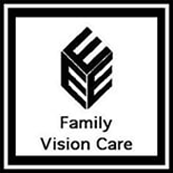Back to School: It’s Time for Your Children’s Eye Exams
Back to School: It’s Time for Your Children’s Eye Exams
.jpg)
A new school year is right around the corner! With it comes the promise of new knowledge learned, new friends made, and new adventures undertaken.
However, before any of these things can happen, you need to have your child’s eyes examined.
Regular eye exams are a crucial step to ensure that your child's vision and eye health are in pristine condition.
Vision is one of the most important factors when it comes to education. Most key information is presented visually, and if your child cannot see the board, they will quickly fall behind.
This blog post will go over some key reasons to get your child's eyes examined before the school year begins.
Why You Must have Your Children’s Eyes Examined Before the School Year
Proper vision is one of the most important things you can do to ensure that your child excels both in the classroom and at extracurricular events.
Here are some of the top reasons to have your children’s eyes examined before the school year.
School Screenings Can Miss a Lot
Many schools provide vision screenings as a part of their yearly services. However, these screenings often miss a lot.
Most commonly, school examinations only use a visual eye chart to measure children's visual prowess. These charts measure visual acuity, but they often miss blurry or double vision.
Kids with normal visual acuity may pass these tests though they struggle with other visual imperfections.
If your child has blurred or double vision, school tests may not detect these issues. This means without a proper exam from an optometrist, your child can struggle to read, write, and see information on the board.
This is especially common for children who struggle with binocular vision.
It is estimated that 43% of children who have vision problems can successfully pass a school vision test. That means that school tests are prone to missing significant and treatable vision issues.
The key to maintaining lifelong vision health is early detection and proper treatment. You must visit an optometrist to ensure your children’s eyes are properly cared for.
Vision Problems Mask themselves as Learning Difficulties
When children struggle in school, their poor performance is often attributed to learning difficulties and mental illness.
Vision problems, while one of the most common reasons for academic struggles are often overlooked.
This is especially concerning as it is thought that over 80% of classroom learning is visual.
While ADHD and ADD are serious problems that must be addressed for a proper education, vision problems are often misattributed to these illnesses.
Children who experience blurry vision, and suffer from headaches, eyestrain, or excessive eye itching may have a refractive error such as myopia (nearsightedness), hyperopia (farsightedness), or astigmatism, or another condition such as convergence insufficiency.
However, the fidgeting and academic struggles that may accompany these vision issues are commonly attributed to ADHD or ADD.
Only an optometrist can help determine if your child's classroom issues are the result of vision problems and not another illness. This is yet another reason why vision assessments before the school year are vital.
Better Vision Care for Your Children at Family Vision Care in Oxford
You want what is best for your children. The best way to ensure that your children have a fruitful school year is to schedule an appointment with an optometrist.
If you want the best optometrist in town, look no further than Dr. Jeffrey Collins at Oxford Family Vision Care.
Dr. Collins has been practicing since 1989 and is the most skilled optometrist when it comes to detecting vision problems in you and your children.
Proper vision care isn’t just for grade schoolers, high school and college students need regular eye exams too.
Are you a student at Miami University? Then we have good news for you! Oxford Family Vision Care is only a short walk from campus. We offer eye exams to students to help get them ready for the new school year.
